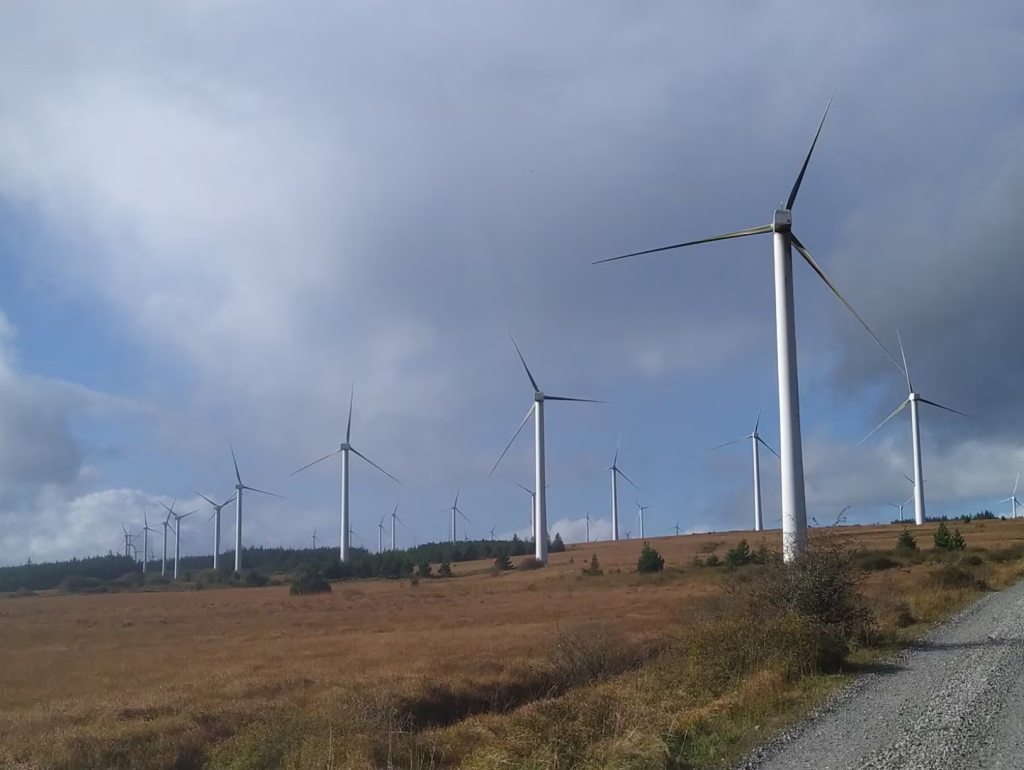
A recent planning application to An Coimisúin Pleanála has been made by a limited liability company called Gort Windfarms Limited (GWL). It concerns a windfarm on Slieve Aughty in rural County Galway with 70 major wind turbines with generating capacity to power 30,000 homes.
You might think that was good news, bearing in mind that we are falling far behind our national targets to build renewable wind generating capacity both on land and offshore. We have seen recently of a number of setbacks for wind power projects.
A windfarm of that size and capacity would cost up to €200 million in today’s prices.
But you would, alas, be very wrong.
The planning application is, in fact, to dismantle the existing GWL windfarm and to remove the existing 70 turbines, to demolish the electricity substation to which they were connected and the compound in which the substation is connected, to demolish the 110 kv overhead line connecting the facility to the national electricity network at a different substation, to demolish that substation and control building, to remove all other ancillary equipment, and to restore the Ennis-Shannonbridge 110 kv power line to its old condition.
The planning application will also entail establishment of three temporary compounds for execution of the foregoing works and works on the network of existing service roads for the 70 turbines, and improvements to existing access roads and forestry tracks at the site.
The application envisages that the site of the GWL windfarm will be abandoned but with its network of 70 turbine foundations – massive concrete cubes – left intact and useless on the mountain top.
The GWL windfarm was built at an unstated cost in 2003 but would cost of the order of €200 million to construct today.
GWL – a wholly owned subsidiary of the ESB – intended the windfarm to function until 2040. It had a lease on the land where the wind farm is situated.
So, all the undisclosed capital cost of building the wind farm, and its planned partial demolition and disconnection from the national grid, is laid at the feet of taxpaying citizens.
The taxpayer has, in addition, already incurred liability for EU fines in the order of €20 million arising out of this debacle.
How did this all happen?
It seems that ESB/GWL did not carry out an appropriate Environmental Impact Assessment (EIA) back at the beginning. Nor did the County Council require one.
No adequate consideration, it seems, was given to the potential impact of a peat slide risk occasioned by the construction works.
As a result, excavation material for the massive concrete foundation plinth for Turbine No. 68 was deposited on adjoining blanket peat, apparently occasioning a peat slide down a small valley on the site. That resulted in 250,000 cubic metres (approximately the volume of 100 Olympic swimming pools) of peat sliding a considerable distance, and some of it polluting a small river, killing an estimated 50,000 brown trout, and causing temporary peat pollution to a small lake used as a local water source.
The EU Commission then brought proceedings against Ireland for the inadequacy of our EIA regime enforcement and eventually started fining Ireland for failing to deal with the resultant damage caused by the peat slide.
GWL applied to An Bord Pleanála for retrospective retention of their windfarm, and after an exhaustive process the board’s inspector recommended that GWL be granted retrospective retention. His reasoning was impeccable in law and common sense.
Alas, somehow convinced that allowing GWL to retain the windfarm would be invalid in EU law because the environmental damage done was irreversible, the Board overruled its own inspector, and went on to effectively decide that the entire windfarm was an unlawful development that needed demolition.
If a similar decision had been arrived at on similar EIA grounds, say, in the case of a motorway toll bridge scheme in France, would the Commission or the Court of Justice have demanded its demolition? Or would they be content to allow the bridge to stand provided the toll bridge developer did not thereby profit? It is hard to imagine that such a ridiculous demolition would be ordered.
But instead of punishing the ESB by depriving GWL of its windfarm, Ireland allowed the ESB to operate the windfarm until the planning board’s wrongheaded refusal of retention. And now the whole windfarm is to be demolished – less the massive foundations. We lose a vast amount of taxpayer money – and renewable energy for 30,000 homes.
Instead of accepting a legally sound Seanad Bill to preserve the windfarm for the public while depriving the ESB of its ownership and investment, the last government chose to ensure that the Bill was voted down last year.
Why must we lose €200 million euro in present day money and the loss of alternative energy for 30,000 homes?
On no sane view – even of EU law – could demolition of the Derrybrien windfarm be justified.
